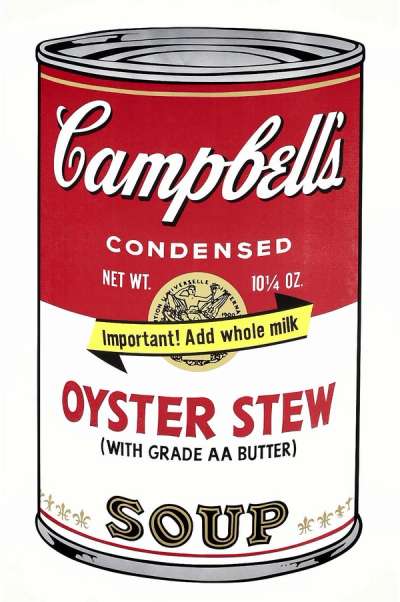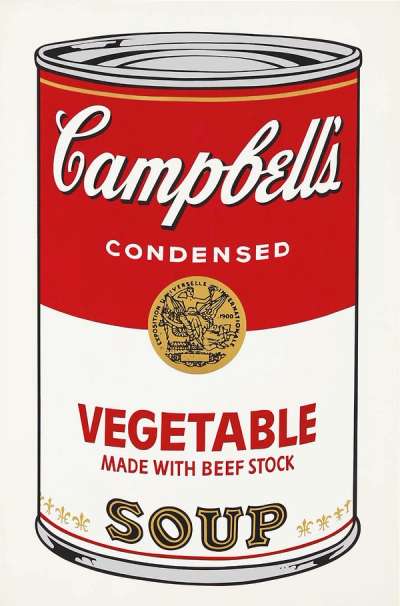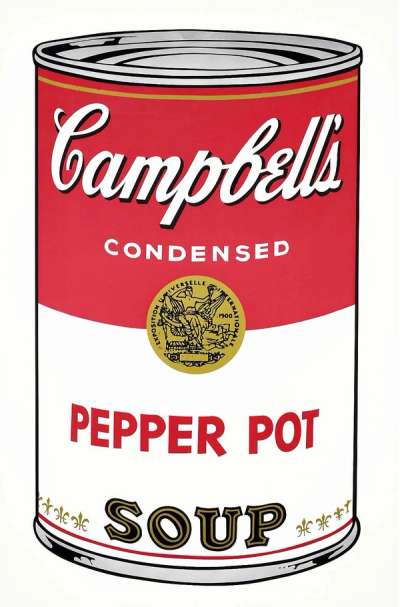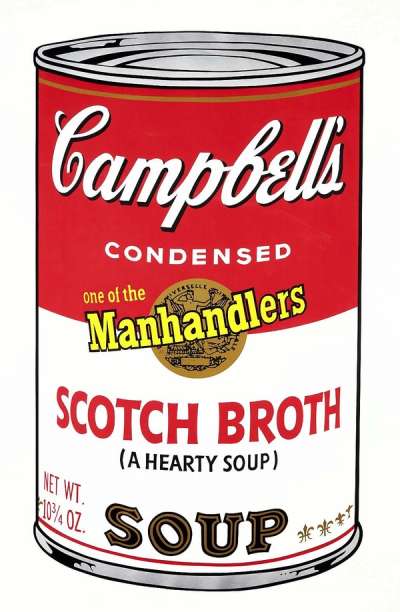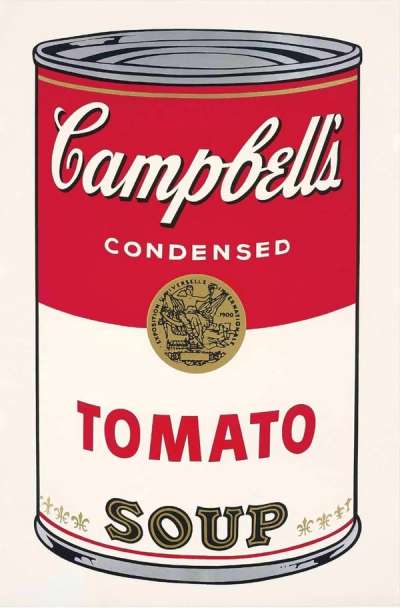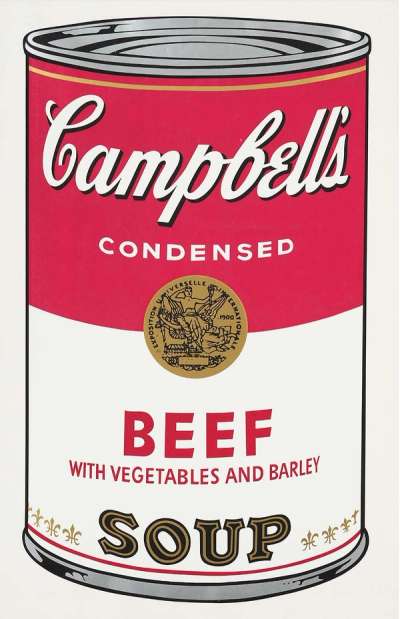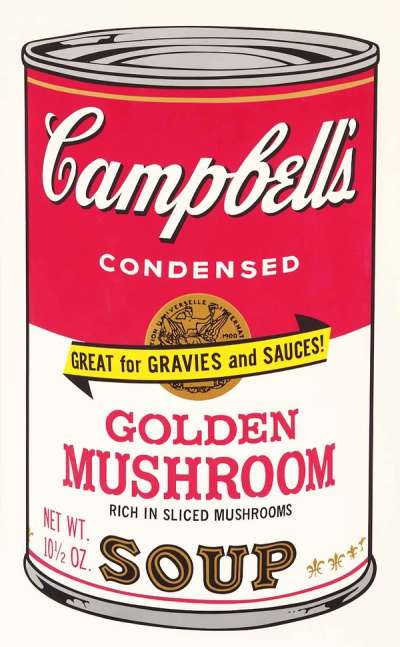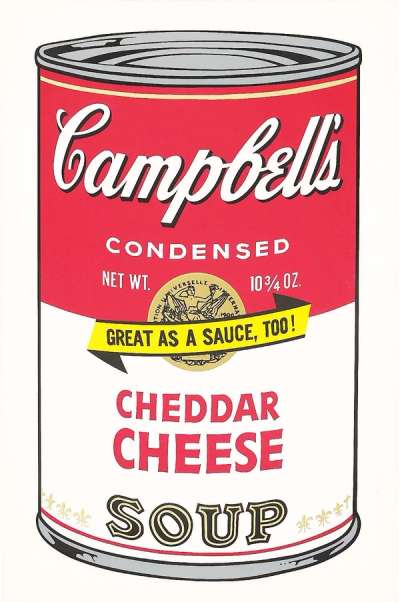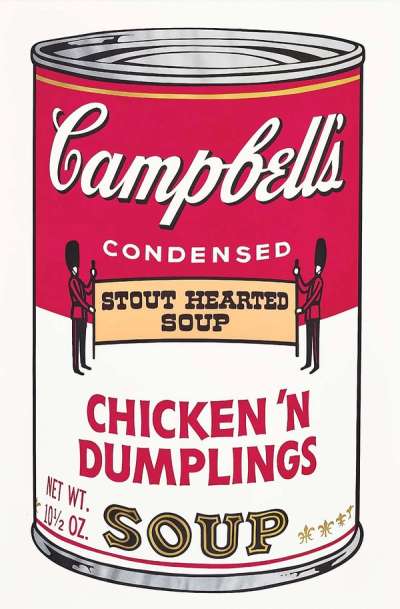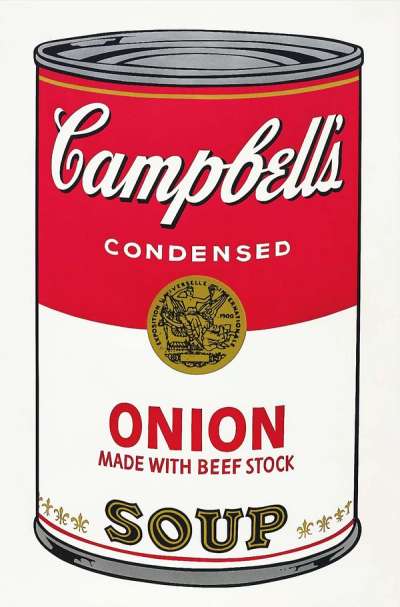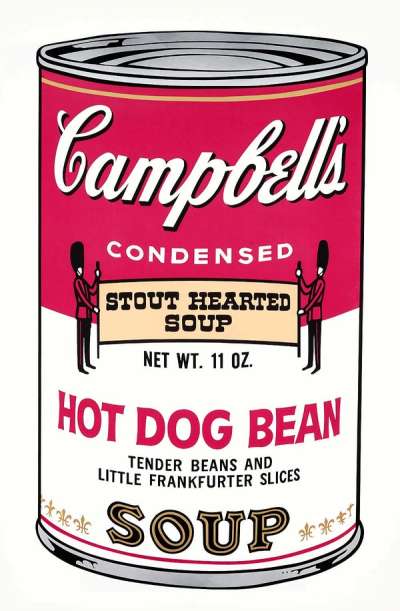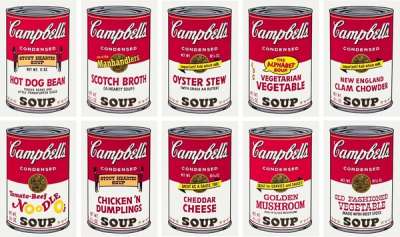Campbell’s
Soup
Andy Warhol saw the mass distribution of household products as an unlikely form of democracy. Begun in 1962, his Campbell’s Soup Cans harnessed the consumerist zeitgeist by reproducing the soup tin packaging many times with mechanical precision and stamina, thanks to his screen-printing technique, in what is now ‘the’ canonical work of Pop Art.
Andy Warhol Campbell’s Soup For sale
Campbell’s Soup Value (5 Years)
Works from the Campbell’s Soup series by Andy Warhol have a strong market value presence, with 680 auction appearances. Top performing works have achieved standout auction results, with peak hammer prices of £1268474. Over the past 12 months, average values across the series have ranged from £8888 to £709592. The series shows an average annual growth rate of 10.15%.
Campbell’s Soup Market value
Auction Results
Sell Your Art
with Us
with Us
Join Our Network of Collectors. Buy, Sell and Track Demand
Meaning & Analysis
Among Warhol’s most famous works, the Campbell’s Soup Can series encapsulates his fascination with consumer culture and processes of mass production. But why did he choose to paint this particular product? Warhol told interviewers that the idea came about because he spent 20 years eating a tin of Campbell’s Tomato soup everyday for lunch, before he was able to afford the cost of dining out, however there is another story that has become part of his myth.
Apparently he was thinking of producing a series based on comic books – as Roy Lichtenstein had already done – when his friend Muriel Latow, who he was paying for consultation, suggested he paint something that ‘everybody would recognise’, such as the now iconic cans. Whatever the original source of inspiration, it is undoubtedly the product's ubiquitous status in American everyday life that originally drew Warhol to the can as a subject.
Warhol first exhibited the series in 1962 at the Ferus Gallery in Los Angeles. The pieces were presented on shelves that were purportedly installed to ensure the works were all level, however later this hang was read as an attempt to replicate a supermarket display of mass produced goods.
The exhibition was initially met with criticism – one commentator said of Warhol, “This young 'artist' is either a soft-headed fool or a hard-headed charlatan,” while Willem de Kooning famously called him “a killer of beauty” – and only a small number of the works were sold, the first to actor Dennis Hopper. Once Warhol had gained critical and popular acclaim in the late ’60s and ’70s, however, Ferus Gallery owner Irving Blum regretted selling the works individually and bought the paintings back in order to maintain the series – an effort which is said to have cemented their legacy. In 1996 he sold the entire set of paintings for a reported $15 million to the Museum of Modern Art in New York, where they can still be seen on display today. Single canvases from the wider Campbell’s Soup painting series – which can reach anything from $4 million to $9million at auction – can be found in public collections all over the world.
The original 32 works on canvas were created entirely by hand, using a process of under-drawing, painting and stamping. Later works from the collection would be printed using the silk screen method on canvas and in 1968 he began producing screen-printed portfolios of the soup cans on paper (Campbell’s Soup I and Campbell’s Soup II). The ubiquitous tin also appeared in his Reversals and Retrospectives series and the subject remained one of his favourites throughout his career. As he once said, “I should have just done the Campbell’s Soups and kept on doing them…everybody only does one painting anyway.”
Warhol’s Campbell’s Soup works are typical of his practice: they contain within them ideas that would establish the artist’s position as the pioneer of Pop and continue to influence generations of artists over 30 years after his death. It is in these pieces that Warhol’s preoccupation with consumerism, appropriation, reproduction, mass media and the democratisation of commercial culture come to the fore. The artist’s first Campbell’s Soup Can paintings introduced an idea central to Warhol’s oeuvre; that not only is everyday life valuable artistic subject matter, but that art is indeed inseparable from everyday life.
In this series and beyond, Warhol deliberately rejected the individualistic ideals of the Abstract Expressionist movement that predated him, seeking instead an art form that was no longer defined by the craftsmanship of the artist or an ideology of uniqueness but spoke to the masses through its subject and processes. These works replicate the direct visual language of advertising and employ the artist's strategy of reproducing the same image in series in order to empty a subject of its meaning through repetition. The resultant image is powerfully ambiguous and has become an icon that continues to circulate in the worlds of contemporary art, fashion and advertising. Warhol's Campbell's Soup works are not only important for their position in the development of American Pop Art and their place in the timeline of Warhol's career, they were also remarkably prescient of the fascination with brands that still pervades this period of late capitalism, and for that they remain striking not just in their aesthetics but their continued relevance.


